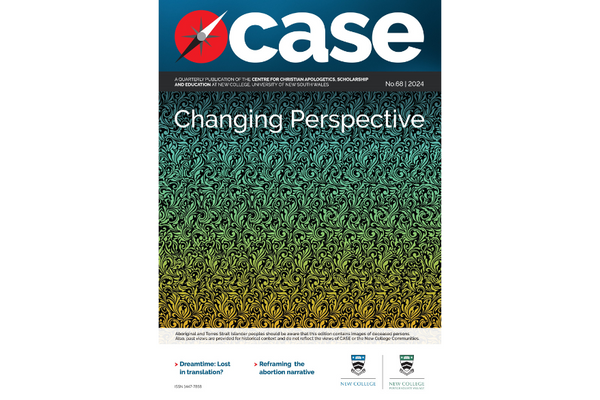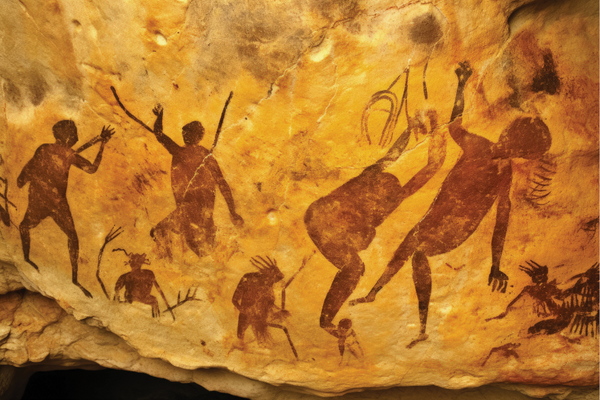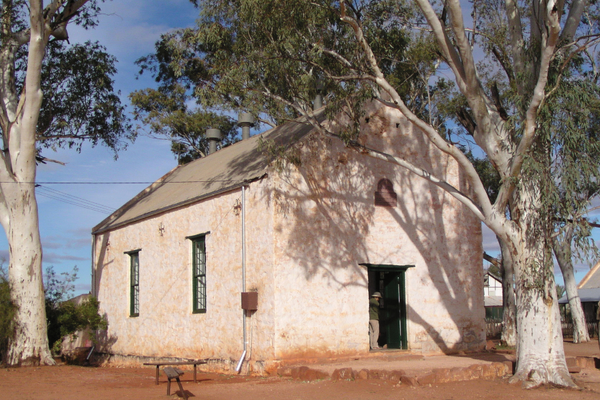Book Review: No Room for Evil

David Bentley Hart’s book The Doors of the Sea began as an article in The Wall Street Journal on 31 December 2004, five days after the terrible Tsunami that started offshore at Banda Aceh and ravaged the coastal populations of Southern Asia. This was followed by an expanded article, ‘Tsunami and Theodicy’, in the March 2005 issue of First Things.
In all these versions, Hart’s argument has been controversial. Hart’s book is a contrast between two rival ways of looking at ‘natural evil’ and the sovereignty of God. In the first half of the book, Hart discusses and rejects approaches he sums up under the heading ‘Universal Harmony’. This includes first of all those deistic theodicies that attempt to understand evil by showing how it contributes to a greater good, making this ‘the best of all possible worlds’ (p17). Hart argues that views of this kind—which tend to be the target of attacks on belief based on ‘the problem of evil’—simply fail to engage with the Christian understanding of God, and of the world as other than it should be.
Yet, Hart claims, the same criticism often also applies to Christian responses to evil that attempt to make room for it as part of God’s plan. Behind a variety of responses to his argument in The Wall Street Journal, Hart discerns a ‘wish to believe that there is a divine plan in all the seeming randomness of nature’s violence that accounts for every instance of suffering, privation, and loss in a sort of total sum’ (p29). Hart takes issue with details of these views to do with the reality of creaturely freedom (pp29–30) and original sin (pp31–34). But beyond this, he is interested in a deeper point. ‘Providence’, he suggests, in what is perhaps the key theological assertion of the book, ‘is not simply a “total sum” or “infinite equation” that leaves nothing behind’ (p29).
To explore this thought, Hart draws on the famous argument against God given voice by the character Ivan Karamazov in Dostoyevsky’s The Brothers Karamazov. Ivan’s argument is essentially this: perhaps there will be, in God’s plan, a final harmony for the world; but the terms are too great. No plan, no greater good, could be accepted in which the evils of this life—which Ivan recounts in detail—are a necessary part. Ivan, explains Hart, ‘cannot figure the suffering of children into that final equation without remainder’ (p40). Ivan rejects salvation on moral grounds. ‘The history of suffering and death is not morally intelligible’ (p44). Ultimate truth ‘is not worth the tears of that one tortured child’ (p41).
This, argues Hart, is a deeply unsettling argument. Yet it is also one that we need to hear; because, Hart insists, it is a powerfully Christian argument (p42), freeing us from unpleasant allegiances with various idolatries and forcing us back to the gospel, to the ‘empty tomb, which has shattered the heart of nature and history alike (as we understand them) and fashioned them anew’ (p44).
This leads Hart to the second half of the book, in which he explores the idea of the gospel as a ‘Divine Victory’ over evil. Hart begins by contrasting the modern, mechanistic view of nature with what he regards as a Christian vision, of nature as charged with wonder by its spiritual source in the transcendent God (pp45–60). The Christian ought to see the world in two ways at once: as nature, with all its fascination and horror, but also as creation, ‘its first and ultimate truth’ (p60). ‘To see in this way is to rejoice and mourn at once, to regard the world as a mirror of infinite beauty, but as glimpsed through the veil of death; it is to see creation in chains, but beautiful as in the beginning of days.’ (p61)
Hart points out that the Scriptures are rich with a ‘cosmological idiom’ that gives a real and important place to the shadowy spiritual forces that operate in the ‘long melancholy aftermath of a primordial catastrophe’ (p62). There are ‘thrones, dominions, principalities, and powers’ of this dark age that, Hart argues, underlie the ‘kind of “provisional” cosmic dualism within the New Testament’ (p62). This is not an ultimate dualism, but ‘a conflict between a sphere of created autonomy that strives against God on the one hand and the saving love of God in time on the other’ (pp62f ). And this conflict prohibits the Christian from simply affirming the ‘total and direct divine sovereignty in all the eventualities of the fallen world’ (p66). The gospel is not a matter of justification of the present world order, but God’s triumph over it.
To explain this triumph, Hart draws on the resources of classical Christian metaphysics (pp70–81). He insists that Christianity is committed to the ideas both of evil as privation of good (and so possessing no ultimate reality) and of God’s apatheia, or impassibility—the transcendent, secure freedom of God in which he loves in grace. Thus the cross is not something God needed for himself, or some way in which evil wormed its way into eternity: it is God’s victory over sin, his loving and utterly gratuitous rescue of creation from its selfdestruction. ‘The cross is… a triumph of divine apatheia, limitless and immutable love sweeping us up into itself, taking all suffering and death upon itself without being changed, modified, or defined by it, and so destroying its power and making us, by participation in Christ, “more than conquerors”.’ (p81)
This understanding of God’s action in Christ leads Hart to reject any understanding of providence that is essentially deterministic, seeing God’s will directly behind every event. God’s government of the world is not simply authorship. There is a real realm of creaturely freedom that deserves attention (pp83f ), such that the difference between God’s permitting evil and willing it really matters (p86). ‘God may permit evil to have a history of its own so as not to despoil creatures of their destiny of free union with him in love, but he is not the sole and irresistible agency shaping that history according to eternal arbitrary decrees.’ (p87) In this, Hart positions himself explicitly over against Calvin, who, he argues, failed to see the significance of the distinction between willing and permitting (p96), and who consequently lost sight of the goodness of God and saw only sovereignty (pp90f ). God’s good ends will be realised not by way of, but in spite of the tragedies of evil (p99). God ‘is not the secret architect of evil… he is the conqueror of hell’ (p101).
Hart’s argument is not entirely satisfactory. As he himself recognizes, we are not completely saved from the logic of Ivan’s argument. There is, still, a decision to be made as to whether one believes that God’s purposes can ultimately warrant his permission of evil (pp69, 88). Furthermore, and significantly, Hart’s argument may not have enough room for biblical language of God’s wrath. Pain and suffering are perhaps too straightforwardly equated with evil in a way that renders God’s judgment incomprehensible.
Yet when all is said and done, it seems to me, at least, that Hart’s argument will not go away. His claim that the Bible is full of language of spiritual struggle, and of divine victory, is well founded. And more importantly, his arguments find Christological support. Jesus’ response to suffering was not, as Hart points out, to explain it (p87). ‘Ought not this woman,’ asks Jesus, ‘a daughter of Abraham whom Satan bound for eighteen years, be loosed from this bond on the sabbath day?’ (Lk 13:16) If Jesus uses this language, why do we not?
Some might argue that finally language is all that is at stake here. Defenders of Calvin will rightly point out that he upheld the distinction between primary and secondary causality (e.g. Institutes I,17,6–9), and that Hart has not appreciated the nuances of his argument. Yet it is one thing to recognize a distinction; it is another to allow it genuine space to function. Moreover, the language we use to describe realities shapes the way we think about them. Hart’s work is, at bottom, an attempt to take seriously ‘the New Testament’s cosmological and soteriological imagery’ (p96). ‘This great narrative of fall and redemption,’ he argues, ‘is not a charade, not simply a dramaturgical lesson regarding God’s absolute prerogatives prepared for us from eternity, but a real consequence of the mystery of created freedom and the fullness of grace.’ (p97) Often, the Bible’s language of demonic authority is too easily taken as a charade, such as when Calvin takes Job’s statement that ‘the Lord gives, and the Lord takes away’ (Job 1:21) as the truest interpretation of his suffering (Institutes I,18,1). Satan may have afflicted Job, but what really mattered was that God was the primary cause. Ultimately, although we may not want to travel all the way with Hart, this book should press home at least one important point: if we deny a central feature of the Bible’s language about suffering and death—its language of evil forces and their overthrow—we may risk seriously distorting both the gospel and our understanding of God. The Doors of the Sea is a reminder that things of enormous import are at stake in the way we think about providence and evil. Hart’s argument deserves attention because it is an attempt to place the gospel of God’s gracious and terribly beautiful love at the heart of our understanding of his sovereignty, and of evil. And, even if it raises other difficult questions, doesn’t that make sense for Christians?
Leave a comment
Comments will be approved before showing up.



